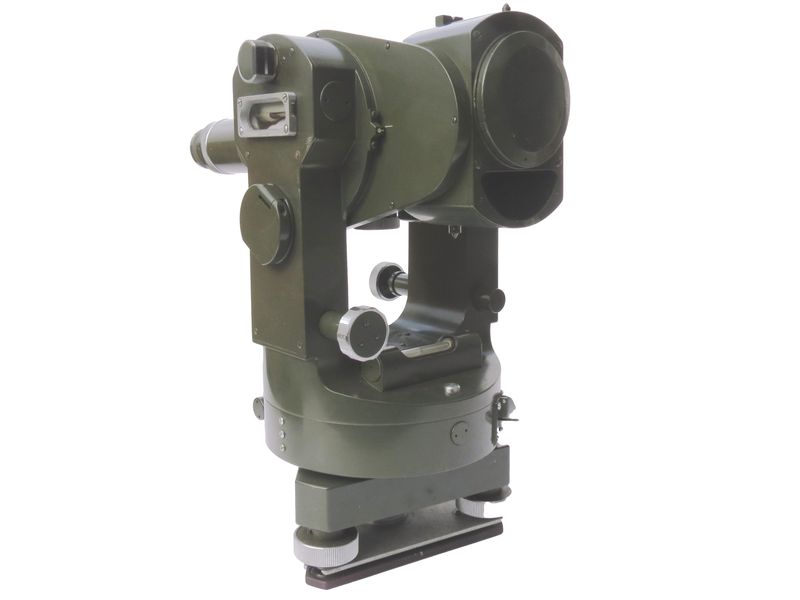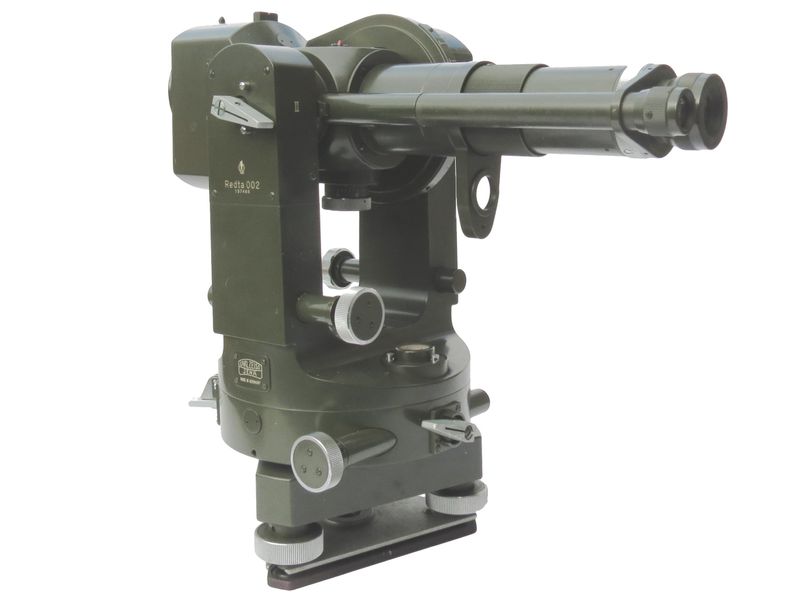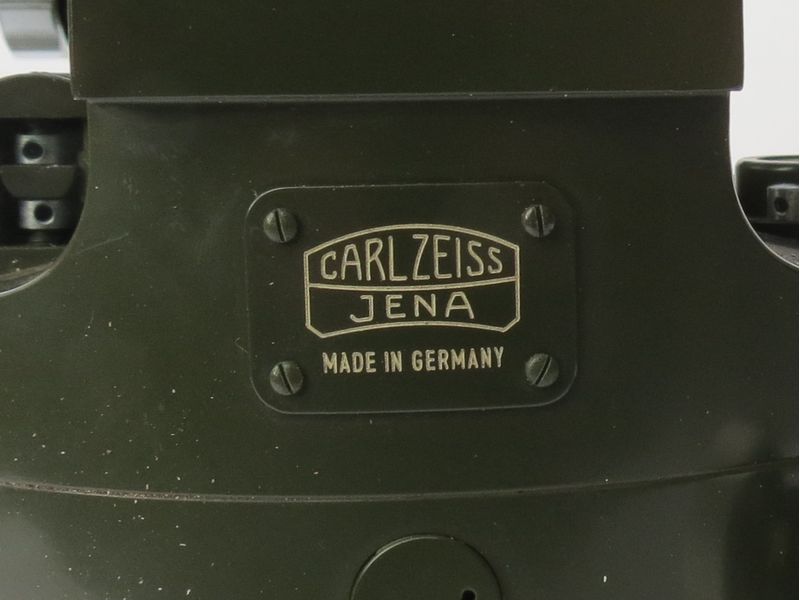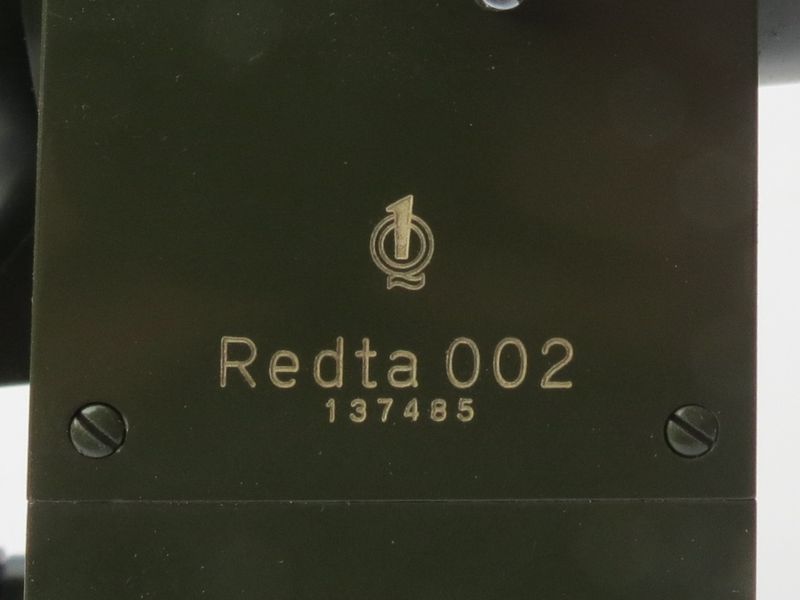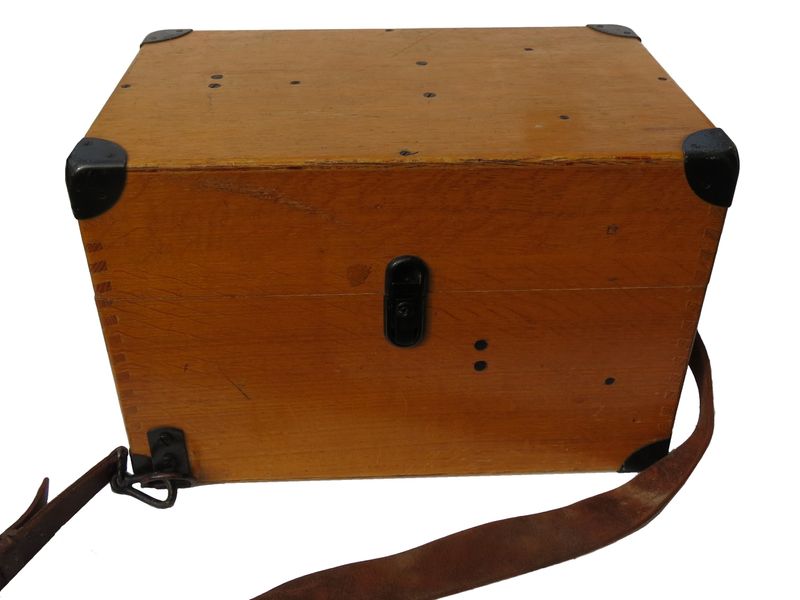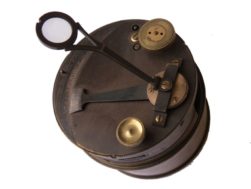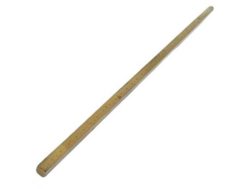Description
Redta 002 Reduction Tacheometer manfactured by Carl Zeiss, Jena, GDR. Wooden fitted box with metal handle and canvas back carrying straps
Information from Zeiss Archives [translated from German]
Even in the age of electronic distance measurement, the REDTA 002 reduction tachymeter reliably meets many user requirements with regard to rational tachymetry. In terms of structure, it is an optical theodolite with a repetition device and distance marks, as well as a self-reducing double image range finder. Achievable measuring accuracy with small triangulation for distances ± 2 cm/100 m and for directions ±10cc (±3″).
New were the easy-to-handle operating elements and tripod screws analogous to theodolite series A, the color separation of the pitch circle images to prevent confusion when reading the horizontal and vertical circles including tangent division, the optical sights in both telescope positions to facilitate rough sighting, the level bubble and lighting equipment according to the latest offer at the time.
The most common way to undertake a tacheometry survey is referred to as the stadia system. Only two pieces of equipment are needed: a tacheometer and a staff. Tacheometers can be manufactured with fixed or movable stadia hairs to allow slightly methods of use.
In the more widely used fixed hair method, the tacheometer used has a telescope fitted with two fixed horizontal cross hairs equidistant above and below the central hair. When a staff is viewed through the telescope, the stadia hairs are seen to intercept a certain length of the staff (h), and this varies directly with the distance between the instrument and the stations. The horizontal distance (d) can be calculated
d = h*k+c
k and c are constants which are fixed by the tacheometer’s manufacture. Generally k=100 and c=0.
In the movable hair method the telescope is fitted with two stadia hairs which can be moved and set at any distance equidistant from the central hair (called the stadia interval). The staff used with this instrument consists of two marks at a fixed distance apart. The stadia interval is therefore variable for the different positions of the staff. This method is/was rarely used.



